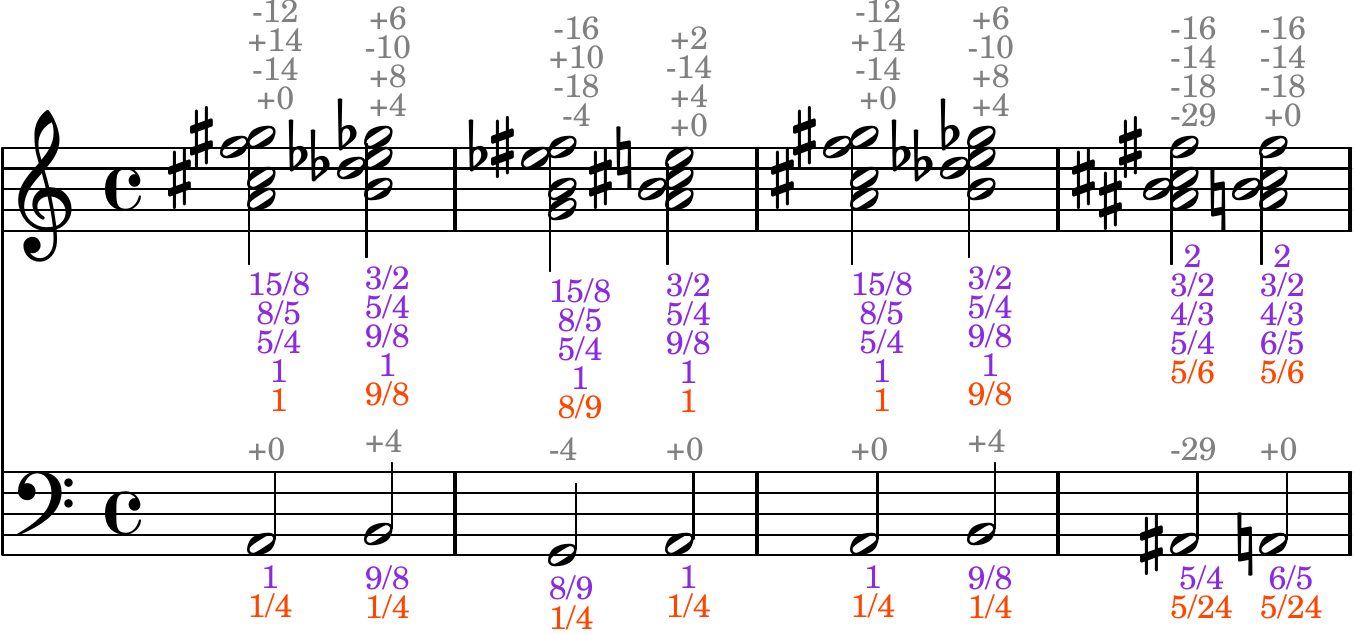Lilypond
Generating sheet music
Jird can translate music written as ratios into lilypond code, a text representation of sheet music. Lilypond can then turn this into a pdf with nice sheet music in. For example if we have the following music in a text file music.txt
MORSEL
Chords
<1 5/4 8/5 15/8>:2 9/8*<1 9/8 5/4 3/2>:2
8/9*<1 5/4 8/5 15/8>:2 1*<1 9/8 5/4 3/2>:2
<1 5/4 8/5 15/8>:2 9/8*<1 9/8 5/4 3/2>:2
5/6*<5/4 4/3 3/2 2>:2 5/6*<6/5 4/3 3/2 2>:2
;
Bass
1/4*(
1:2 9/8:2
8/9:2 1:2
1:2 9/8:2
5/6*5/4:2 5/6*6/5:2
)
then running
$ jird -l music.txt
will generate a lilypond file music.ly. Then running
$ lilypond music.ly
will produce a pdf in music.pdf containing the sheet music below:

The sheet music is annotated with frequency ratios below the stave and cent deviations above.
Cent deviations
The cent deviations say how many cents the frequency of the just note is above or below (+/-) the written note. So for example if 1/1 is C, then a 5/4 will be notated as an E with a cent deviation of -14, since the just major third is 14 cents lower than the 12 tone equal temperament major third. Cent deviations are calculated assuming the written notes correspond to twelve tone equal temperament with A=440Hz.
For a chord, the cent deviations are written in a column and apply to the notes in the chord low to high (so position in column matches position in chord).
Ratios
The notes are annotated with the just frequency ratios they came from.
A single note is labeled with two ratios; the actual just frequency ratio is the product of the two. This allows some of the information from multiplications in the source code, e.g. the current root note, to be displayed in the sheet music. More than two multiplications in the source code are collapsed to just two ratios in the sheet music.
A three note chord, say, is labeled with four ratios. The bottom ratio contains a common factor for all the ratios in the chord. The top three ratios give the frequencies of the notes in the chord when multiplied by the bottom ratio. This is to allow showing, for example, the root note of the chord and the intervals in the chord separately.